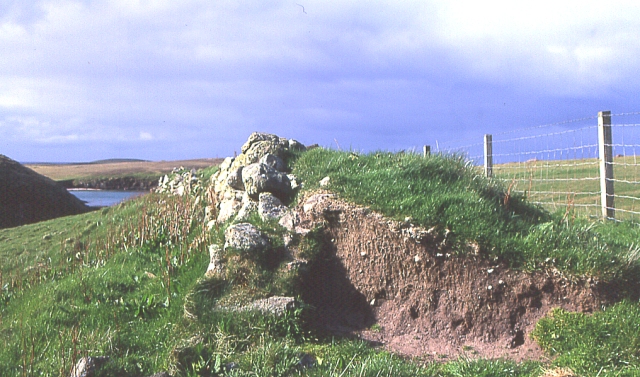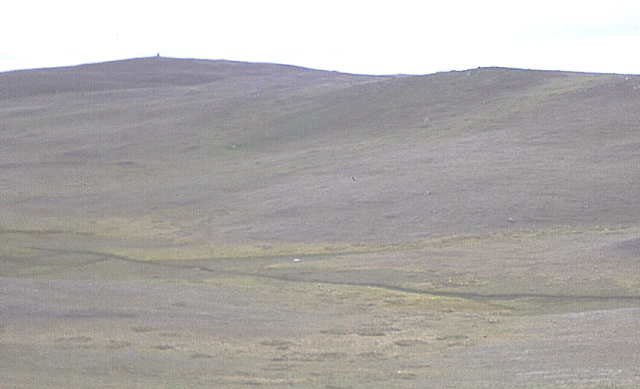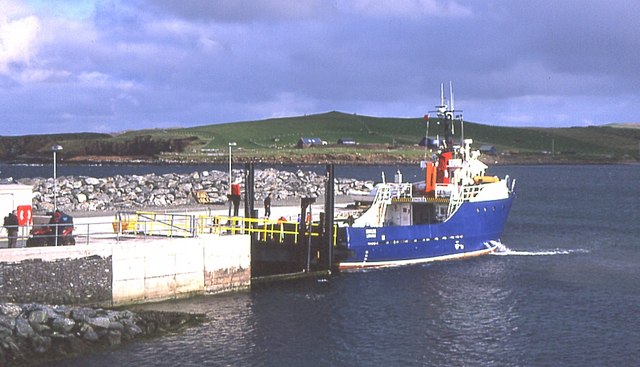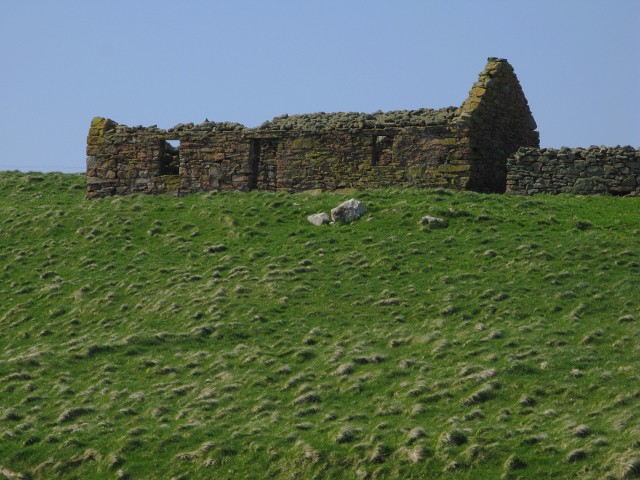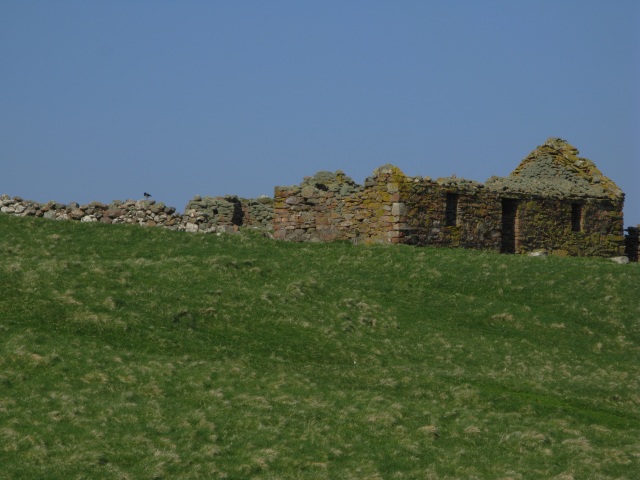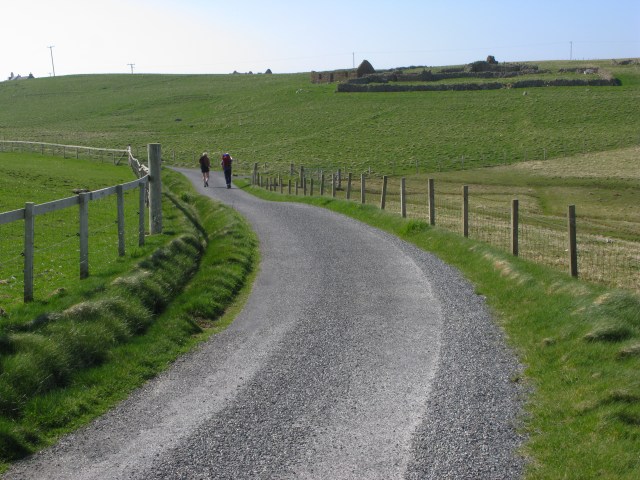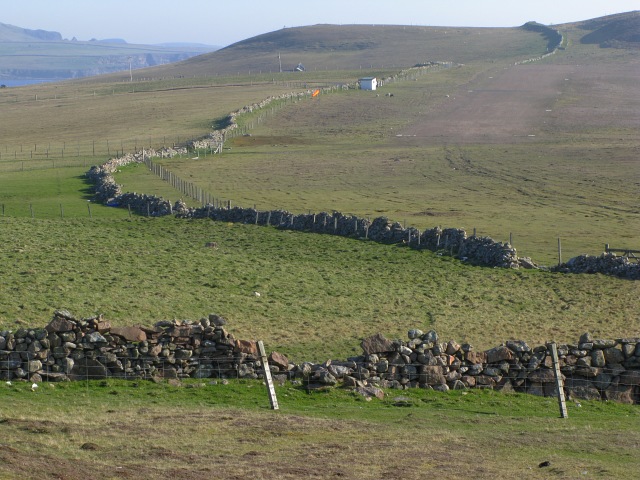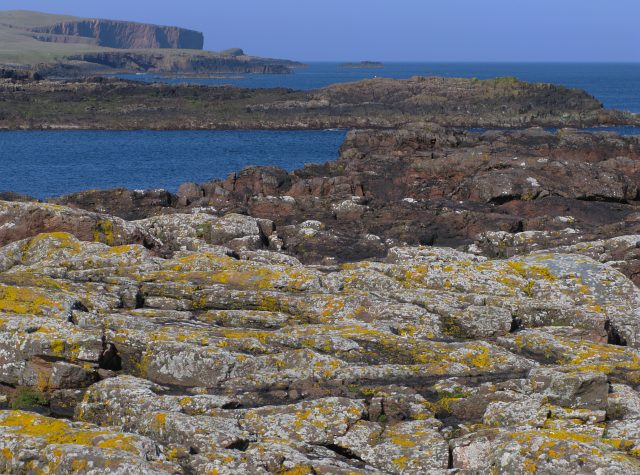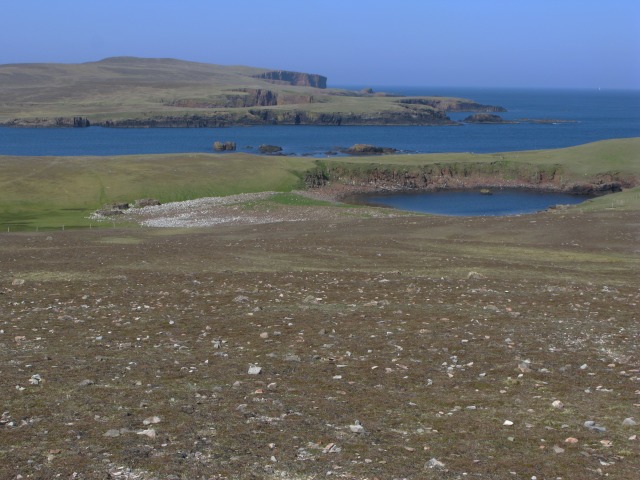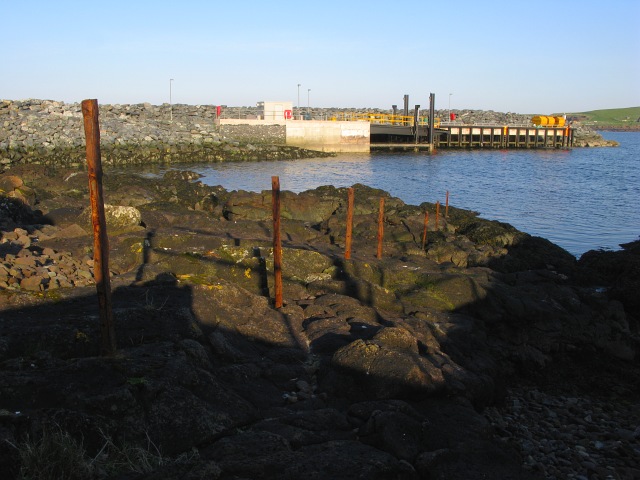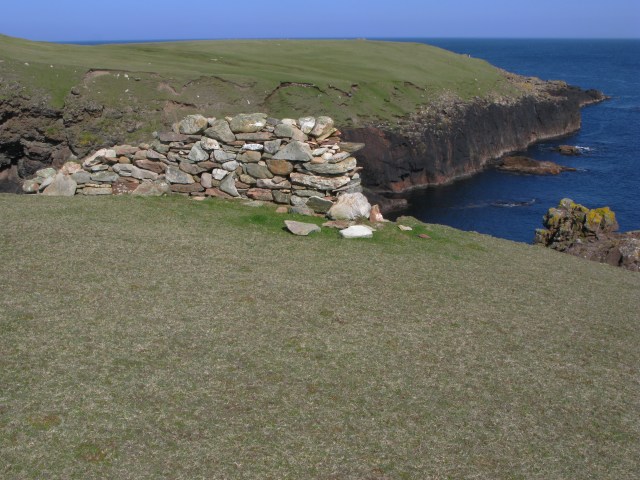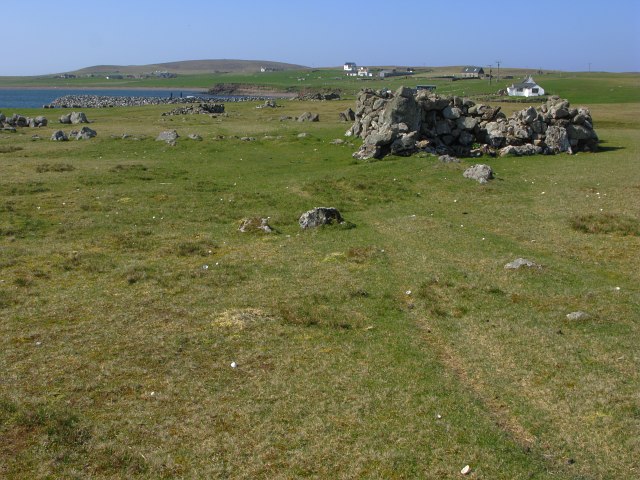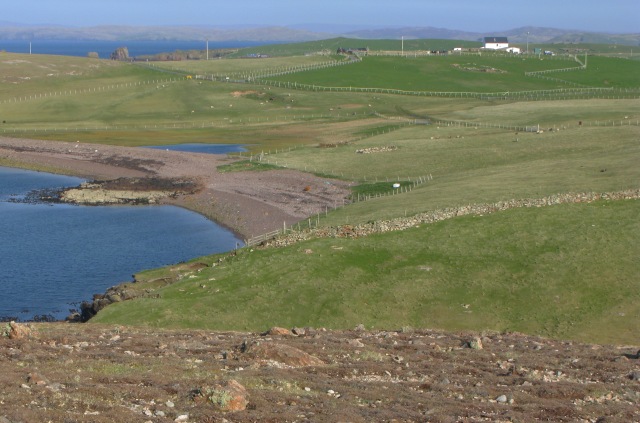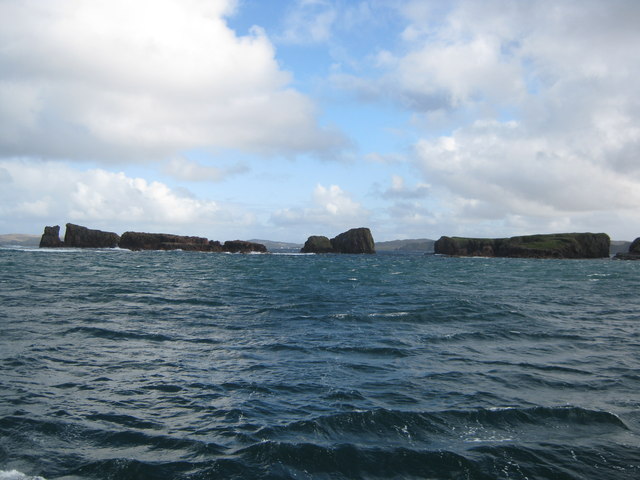Boinna Skerry
Island in Shetland
Scotland
Boinna Skerry
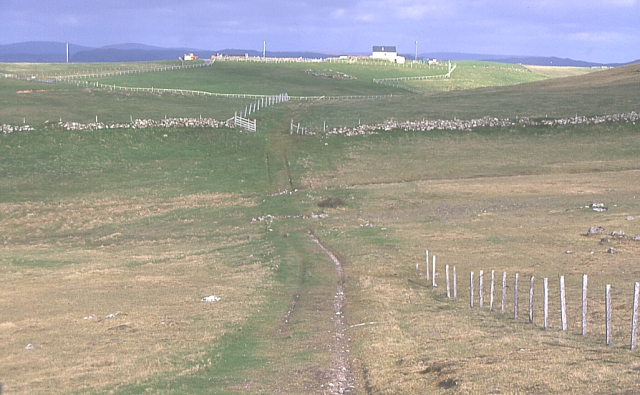
Boinna Skerry is a small island located in the Shetland archipelago, situated in the North Atlantic Ocean. It is one of the many uninhabited islands in the region, known for its rugged beauty and diverse wildlife.
Measuring approximately 0.15 square kilometers in area, Boinna Skerry is characterized by its rocky cliffs and scattered vegetation. The island is primarily composed of ancient volcanic rocks, which give it a distinctive appearance. The coastline is dotted with caves and sea stacks, adding to its scenic appeal.
Boinna Skerry is a haven for seabirds, with large colonies of puffins, guillemots, and razorbills nesting on its cliffs. These birds can be observed during the breeding season, which typically runs from April to August. The island is also home to various other species, including seals and otters, which can often be spotted along the shore.
Access to Boinna Skerry is limited due to its remote location and lack of facilities. It is only reachable by boat, and visitors are advised to exercise caution, as the waters surrounding the island can be treacherous. Despite its limited accessibility, Boinna Skerry attracts nature enthusiasts and birdwatchers who are drawn to its untouched landscapes and abundant wildlife.
Overall, Boinna Skerry is a picturesque and ecologically significant island in the Shetland archipelago. Its dramatic cliffs, diverse birdlife, and rugged charm make it an appealing destination for those seeking a truly remote and natural experience.
If you have any feedback on the listing, please let us know in the comments section below.
Boinna Skerry Images
Images are sourced within 2km of 60.332827/-1.6650423 or Grid Reference HU1861. Thanks to Geograph Open Source API. All images are credited.
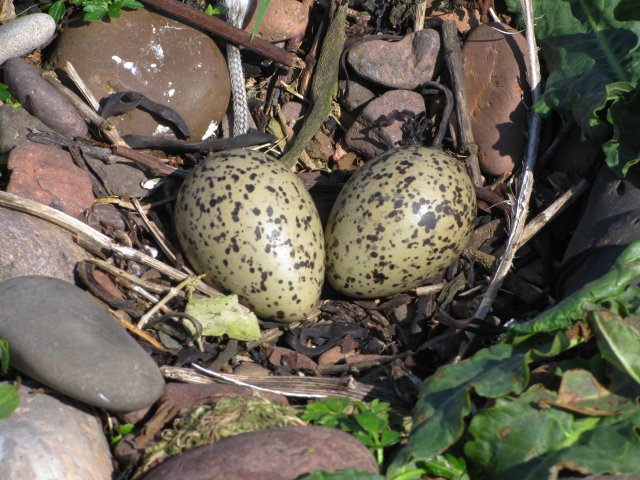

Boinna Skerry is located at Grid Ref: HU1861 (Lat: 60.332827, Lng: -1.6650423)
Unitary Authority: Shetland Islands
Police Authority: Highlands and Islands
What 3 Words
///strain.shot.unloaded. Near Walls, Shetland Islands
Nearby Locations
Related Wikis
Maiden Stack
The Maiden Stack or Frau Stack is a tiny stack in the western Shetland Islands to the north of Brei Holm and east of Housa Voe about 140 metres (150 yd...
Brei Holm
Brei Holm is a tiny tidal islet in the western Shetland Islands. It is due east of Papa Stour, to which it is connected at low tide, just outside Housa...
Biggings
Biggings is a village on the island of Papa Stour, in Shetland, Scotland. Papa Stour's church is situated at the south of Biggings. A homestead of Duke...
Forewick Holm
Forewick Holm is a 1-hectare (2.5-acre) island in the Sound of Papa, between Papa Stour and the Mainland of Shetland. It lies adjacent to a skerry called...
Nearby Amenities
Located within 500m of 60.332827,-1.6650423Have you been to Boinna Skerry?
Leave your review of Boinna Skerry below (or comments, questions and feedback).
